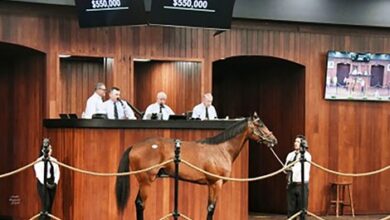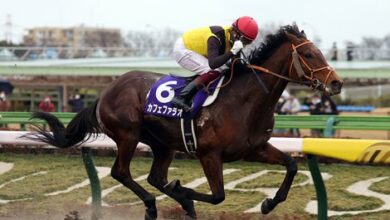HISA Prepares for July 1 Launch of Safety Initiatives
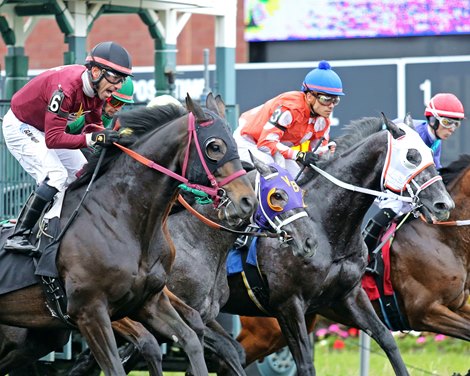
Despite lawsuits, plan changes, and doubters, officials with the Horseracing Integrity and Safety Authority are confident its safety initiatives will begin July 1—the mandated launch date of the program.
Legislation signed by President Trump in December 2020 required the new authority that will draft rules and oversee the sport’s safety regulations—as well as its anti-doping efforts, medication oversight, and labs—be up and running by July 1. HISA is on track to meet that deadline, with plans calling for many of the safety initiatives to launch July 1 followed by the anti-doping and medication control initiatives going live Jan. 1, 2023.
HISA CEO Lisa Lazarus acknowledges that Congress assigned a quick turnaround for HISA’s launch but said the authority will meet that deadline when it begins its safety initiatives July 1.
“We’ve always known that these are—let’s call them aggressive—timelines,” Lazarus said. “But Congress wanted us to act quickly because they were concerned about the welfare and safety of horses and the integrity of the sport.
“I think in light of the aggressiveness of the timelines, we’re actually doing really well. I have a team of people who are working day and night, hosting zoom calls and phone calls relentlessly.”
HISA has been working with state regulators to reach voluntary agreements to ensure enforcement of racetrack safety standards that call for uniform rules on issues such as a standard void-claim rule, requirements to transfer medical information of claimed horses to new connections, and strict protocols on the use of shock wave therapy, as well as policies outlining when horses are placed on the vets’ list and removed from that list. These initiatives fall under HISA’s National Uniform Rules—the “2200 Series” of standards.
States that have reached such agreements with HISA—or where such agreements are imminent—include California, Delaware, Iowa, Kentucky, Minnesota, and Virginia. Lazarus said talks are progressing well with a number of other states. In those agreements, the states agree to share in funding HISA’s 2022 budget of nearly $14.4 million, which includes money for staff, administrative expenses, technology expenses, and litigation costs, as well as ramp-up of the medication oversight.
One of the twists and turns HISA has faced since being signed into law has been a pair of lawsuits questioning its Constitutionality—one led by the National Horsemen’s Benevolent and Protective Association and many of its state members; and another led by the states of Louisiana, Oklahoma, and West Virginia that later added racing states Arkansas, Nebraska, and Ohio.
“The only states that are really not talking to us at all are the states that are suing us; but even Oklahoma is talking to us,” Lazarus said, noting that HISA has offered to provide language to those states making it clear that any type of voluntary agreement should not be viewed as the state conceding any of its points in the federal lawsuit. With that understanding in place, Lazarus expects progress with these states.
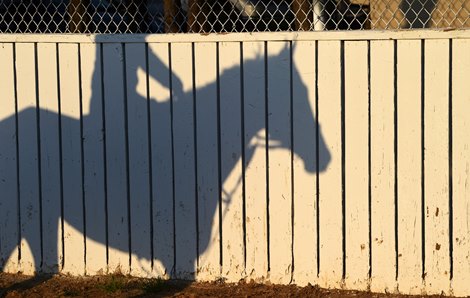
The Association of Racing Commissioners International, an umbrella group of state racing regulators, said in a mid-May release that it will continue to assist HISA in its implementation but suggested that more time is needed for technical corrections. The ARCI release said because of statutory limitations in many states, “the desired HISA-state partnerships are harder to achieve if not impossible in some places.”
ARCI said that 22 states have told HISA it will be impossible for them to remit or collect money to pay HISA assessments.
Lazarus believes the ARCI concerns are overstated and deals will come to fruition with most states. She noted that many state regulators are working with HISA to come up with plans that work for them. If agreements cannot be reached with state regulators, Lazarus further noted that racetracks can directly work with HISA to come up with protocols to meet the safety standards. The HISA legislation does not mandate the authority enter into agreements with state commissions.
Going directly to the tracks already has come into play in Texas, where the Texas Racing Commission joined the HBPA-led suit and has failed to reach an agreement with HISA. With those talks at a standstill, HISA pursued and reached an agreement with Lone Star Park and its horsemen. (Lone Star will be the lone Thoroughbred track running in Texas on July 1.)
As HISA meets with states, it’s also hashing out plans to enforce the safety rules that go live July 1, which include the in-race riding crop rule, the voided-claim rule, and some veterinary reporting obligations. Lazarus said it’s been a matter of sitting down with state regulators and coming up with ways to enforce the HISA rules.
For instance, safety officers could be asked to compile the required veterinary information. She said for states working to come up with ways of meeting these standards and enforcement, plans can be phased in.
Still to be added over time are rules on the minimum safety standards at tracks, the “2100 Series” of rules. Tracks accredited by the NTRA Safety and Integrity Alliance receive three-year HISA accreditation while non-NTRA tracks receive a one-year provisional accreditation. During those timeframes, all tracks will be expected to work toward the 2100 Series requirements and show good faith toward meeting those standards. Eventually, those tracks will receive inspections from an accreditation team that will determine if they’re in compliance.
As the 2100 Series rules go live, they will require a track safety director (a position that could be filled by existing personnel); veterinary inspections of horses after entry, pre-race, and post-race; increased oversight of track surfaces, including pre-meet inspections, daily surface reporting and maintenance logs, and data-driven safety standards; emergency preparedness plans; and a necropsy program.
As for the 2200 Series rules that will be put in place July 1:
• The riding crop rule limits strikes to hindquarters a maximum of six times in increments of two or fewer strikes, allowing a horse at least two strides to respond. It can be used to tap the shoulder while both hands are holding the reins and touching the neck or to show to the horse without contact. It also allows for use of the crop to preserve the safety of the rider or horse.
• The uniform claiming rules requires claimed horses to go to the test barn. Claims can be voided if the horse dies or is euthanized on the track, has a positive test, or bleeds or is unsound within one hour of racing. The rule also requires the transfer of veterinary and treatment records to the new connections.
Registration Requirements
As July 1 approaches, racing participants also face some requirements and HISA is working to educate riders and trainers about their added responsibilities. HISA has reached out to participants through horsemen’s organizations and the Jockeys’ Guild, posters at tracks, direct email, and social media. A current social media campaign pushes jockeys and trainers to fact sheets that highlight a half-dozen points of emphasis.
The campaign has reached out to riders to encourage them to complete tasks before July 1, including registering at hisaus.org, providing certification that a physical exam and baseline concussion protocol test has been completed, ensuring use of HISA-approved safety vests and helmets, carrying a medical history card inside the vest while riding, enrolling in or completing continuing education, and studying and following the new riding crop rule.

Current trainers will be required to agree to complete continuing education classes to maintain their licenses. These classes will allow new information gathered through research to be passed along to the individuals that care for horses. They’ll also be asked to register the horses in their care and agree to keep health, vaccination, training, and daily treatment records of those horses.
HISA has added timeframe concessions for some safety issues that apply to jockeys and trainers. Jockeys will eventually be required to use a riding crop with specific measurements, such as a maximum weight of eight ounces and maximum length of 30 inches that includes a set amount of shock-absorbing material. As currently there is only one company making this specific crop, HISA has granted an additional month to put these in place. To encourage increased production of the equipment, HISA has sent the non-copyrighted parameters of the qualifying crop to other companies to manufacture.
Horsemen are tasked with meeting with their farrier to ensure new requirements that outlaw traction devices in both front and hind shoes are put in place. This also will carry a one-month buffer to allow implementation.
Registration Push
Currently one of HISA’s biggest efforts involves getting participants registered. Besides jockeys and trainers, others required to register include owners, exercise riders, jockey agents, outriders, state racing commissioners, track personnel, racing office staff, veterinarians, farriers, stable area vendors, other equine health providers, and anyone else licensed by a state racing commission.
Registration will require users to accept HISA’s rules and regulations. A photo and contact information also are required. As humans and horses are registered, information will be linked to other available industry databases like InCompass and Equibase. Information will be available in English and Spanish and a 24/7 call center has been enlisted to provide further guidance.
Going forward, continuing education also will be provided for vets, stewards, owners, backstretch workers, track superintendents, outriders, starters, and assistant starters.
HISA acknowledged that relatively few jockeys and trainers have registered to date but Lazarus is hopeful the approaching deadline and concentrated push to get the word out will spur action. She said that added time would have been nice in terms of further educating the industry, but she adds that because of the attention generated by HISA and its efforts to reach out to industry groups, it’s hard to believe that there are many participants who are not aware of the approaching changes.
“That’s the kind of stuff that we’re doing now. Would I have liked to be doing this six months out instead of six weeks out? Of course,” Lazarus said. “But I genuinely think that if you don’t know what you need to do by July 1, and you’re somebody who’s a frequent racing participant, then you’re probably living somewhere where social media is not reaching you and normal channels aren’t reaching you.
“By the time we get to July 1, we’ll have deployed so many different channels, including working with like a lot of groups to try to reach everyone that we can.”
Jockeys’ Guild president and CEO Terry Meyocks was relieved to learn that there will be a buffer time added to the requirement on the riding crop equipment but he said even a month may not be enough time for a smooth transition. Beyond that, Meyocks suggested that HISA put some type of identifying logo on each crop to allow for enforcement going forward.
Meyocks said getting all of the concussion protocol testing completed and the riders registered is a massive undertaking. The Guild has been a driving force on concussion baseline testing and likes that it will be required, but Meyocks has concerns about riders having access and enough time to complete the testing.
Going forward under HISA, riders eventually will be ensured of consistent health and safety protections from track to track as a medical director is required at each track—or tracks can assign an employee to ensure protocols that will be developed by a national medical director employed by HISA. The national medical director will be funded by all the participating tracks.
In practice as the initial safety rules take hold, the level of change for participants will vary because currently such safety standards vary from state to state and from track to track. Many of the HISA safety initiatives are in-line with standards already in place—or called for—by the NTRA Safety and Integrity Alliance, ARCI model rules, major track owners, the American Association of Equine Practitioners best practices, the Mid-Atlantic Strategic Plan to Reduce Equine Fatalities, and California Horse Racing Board reforms.
Looking Ahead
As for potential challenges on the horizon as the 2100 Series safety rules go live, the ARCI is concerned that the requirements that standardize pre-race and post-race oversight by regulatory veterinarians will be difficult because of a shortage of regulatory vets. In its release the ARCI noted that, “The challenge of recruiting large animal veterinarians to perform regulatory functions has long been a challenge for commissions in some states and shifting responsibility to racetracks or HISA is not going to alleviate that.”
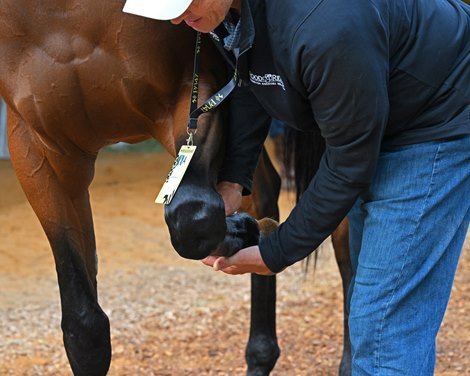
A vet examining a horse
Lazarus acknowledged the concern but noted that HISA may be better positioned to solve that problem. One idea the Authority is considering is hiring a team of regulatory vets to work a region. The team potentially could move from one meet to the next as the schedule changes throughout the year.
“Regulatory vets definitely are an occupation that there aren’t enough of. We’re trying to look at ways to make that happen,” Lazarus noted, adding that there is some time to meet these requirements. “We’re definitely looking to work with the tracks to get up to speed over time. And we’re trying to come up with ways to think creatively about how we can potentially have a group of regulatory events that maybe cover various regions of the country. We can kind of pull those resources and use them more effectively.”
As new standards go live, Lazarus said HISA is working to find cost-effective ways of putting requirements in place but notes that expense is not an excuse for inaction.
“The bottom line is—I’m being very candid and hopefully not sounding too harsh—it’s federal law. We have to do it,” Lazarus said. “It’s not a question of what incentivizes us; it’s actually the law.”
To register with HISA, click here.


